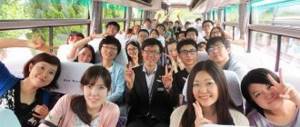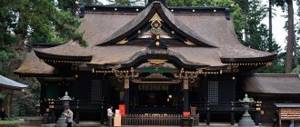Universities in Japan are a concentration of advanced laboratories, where more than one innovation in the field of medicine and technology has seen the light. Today, this state is considered a trendsetter in new trends in science and a forge of professional personnel in the field of IT, engineering and technology. At the end of the last century, it was almost impossible to get to study at a Japanese university. It is only thanks to the government program for the internationalization of universities that talented young people from other countries have access to one of the most effective higher education systems in the world.
How the Japanese education system works
The Japanese educational system has been closed for a long time, which allowed it to form its own model and achieve high efficiency in teaching the younger generation. At the end of the 19th century, integration with Western models began, as a result of which the learning process acquired the following appearance:
- Preschool education.
- Elementary School.
- Secondary education, including 2 stages - incomplete and complete secondary school.
- Higher education.
Before a child sits down at a school desk, he will have to undergo a socialization process in a child care center or kindergarten. And although this stage is not mandatory, many parents still prefer to entrust their child to experienced teachers.
Preschool institutions are of public and private type. Both adhere to the same programs and pricing policy - 100-500 US dollars per month.
Children go to school at 6 years old. Education in government institutions is provided free of charge, even for foreign children. Private school can cost $3,500.
Incomplete secondary education is also not paid. But to get a full certificate, you will have to stock up on finances - from 3,000 to 13,000 dollars. At this stage, the child can either graduate from high school or enter a vocational college.
Children begin to wear school uniforms only in secondary school. Until this moment, their appearance is not regulated by rules.
After completing secondary education, students can apply for admission to higher education institutions. Their training is divided into several stages:
- Bachelor's degree – 4 years;
- Master's degree – 2 years;
- postgraduate study – 3 years.
Studying at veterinary and medical faculties lasts a minimum of 6 years. Teaching is primarily in Japanese, but some universities also have English programs.
Those interested can graduate from one of the many language schools. Here, students are offered a wide range of programs: from short-term (no more than 3 months) to long-term - lasting 2 years.
The article “How to get an education in Japan: stages, features, cost” will tell you in detail about the Japanese education system.
Content
- General educational system
- Training advantage – is there one?
- How to enter a university?
- What documents are needed?
Despite the fact that Japan is considered a country far from American and Western traditions, it is similar to its European partners in the education system. Higher education here can be obtained according to the principle of three cycles - first bachelor's degree, then master's and doctoral studies. There are no postgraduate or residency programs for doctors. Everything is clear, without unnecessary burden on students. At the same time, traditions and national values are preserved. a university is the end of many years of study in kindergarten, school and university, and the beginning of a career as a step into adulthood. Everything that is before the university refers to “pre-institute” life, but is an integral part of discipline and self-education.
Admission to a Japanese university
Japanese universities do not impose any special conditions for foreigners. Reception is carried out on a general basis. A prerequisite is the presence of a diploma of complete secondary education, corresponding to 12 years of study in Japanese schools.
Since in most CIS countries the average school stage lasts 11 years, Russian, Ukrainian and other applicants need to take one-year preparatory courses in Japan or study for a year at a university in their homeland.
A certificate of passing a language exam is required for admission. In Russia, it is conducted by the Institute of Asian and African Countries, based at Moscow State University.
The exam includes three stages:
- testing knowledge of vocabulary and hieroglyphs;
- reading;
- listening.
To successfully pass the test, you need to know about 2,000 hieroglyphs well. The exam is divided into 2 types:
- Nihongo Noryoku Shiken - tests knowledge exclusively of the Japanese language;
- Nihon Ryugaku Shiken - tests the stock of knowledge in some basic school subjects.
To enroll in the English program, you will need a TOEFL or IELTS certificate. The documents Japanese universities most often request are:
- A copy of a foreign passport.
- Photo.
- Diploma of completion of the first year of university in the country of citizenship or completion of preparatory courses.
- School certificate with a transcript of grades.
- Motivation letter.
- Recommendations from teachers.
- Autobiography.
- Certificate of passing the language exam.
- Certificate of financial solvency (at least 15 thousand dollars per year).
To enter Japanese territory you will need a student visa. It is issued on the basis of an invitation from a university, which acts as a guarantor in relation to a foreign student. In addition to the documents listed above, to submit to the consulate you will need medical insurance, a certificate of absence of dangerous diseases, and a certificate of no criminal record.
Features of studying in higher educational institutions of the country
The curriculum at higher educational institutions in Japan has a clear gradation into general and special disciplines. During the first two years of study, students intensively study general sciences, such as history, philosophy, literature and foreign languages.
In addition, special lectures are given for them, dedicated to specific specialties. Registration for them is optional, but most students still choose several courses based on their own preferences and predisposition to a particular subject.
Special training school in Japan
The first years are necessary to improve general buildings and determine the future specialty. At the same time, the teaching staff evaluates the capabilities of each student and helps make a choice. Subsequent years are devoted to the study of specialized programs, according to the chosen scientific direction.
The duration of study at all institutes is the same and is 4 years. Moreover, it absolutely does not depend on the prestige of the university or the profession chosen by the student. The only exceptions are dentists, paramedics and veterinarians, who are forced to study 2 years longer. Upon completion of their studies, students receive a bachelor's degree, which in the local dialect is gaku-shi.
To improve your qualifications, improve your skills and obtain a shu-shi degree equivalent to a traditional master's degree, you must study at the university for 2 additional years.
The vast majority of institutes, when drawing up a plan for the educational process, focus on the semester system. To receive a positive grade in a subject, a student must score a certain amount of points in one semester. Their number is determined by summing up the teaching hours allocated for studying a specific discipline.
At the end of the 4th year, to receive the gaku-shi degree, the student must score at least 124 points out of a possible 150 in each subject.
To travel, you must obtain a visa to Japan.
Choosing a university
The total number of higher education institutions in the country is about 700.
These include not only universities, but also junior, technological and technical colleges.
The number of public universities in the country is small - only 10% of the total number. Considering how many universities there are in Japan, a short overview of the country's leading universities will not be superfluous. The list is presented according to the national rating.
Study at the University of Tokyo
The University of Tokyo or Todai is located in the Japanese capital. The date of its foundation is 1877. It was then that the faculty for the study of Western culture and several schools of medicine merged.
Nine years later, the educational institution was awarded imperial status. Since then, it has been the country's leading university and one of the most prestigious in the Asian region.
The University of Tokyo became famous due to its Faculty of Management and Law, whose graduates include most Japanese politicians and executives of large companies. A university diploma opens up great prospects for graduates who successfully find work within six months after graduation.
The University of Tokyo operates the country's largest research center, the main areas of which are chemistry, astronomy, chemical engineering, and architecture.
Under its roof, the university unites 2 colleges (natural sciences and humanities) and 9 faculties:
- pharmaceuticals;
- medicine;
- natural sciences;
- humanitarian;
- rights;
- engineering and technical sciences;
- economics;
- Agriculture;
- pedagogy.
There are also 11 postgraduate schools here.
To study at a university you will need the following budget:
- Bachelor's degree - $4,000;
- master's degree - $4,650;
- doctoral studies – $4,500.
Students live in the Misaka university dormitory, which consists of 605 single rooms equipped with the necessary furniture, a bathroom and a kitchen. The cost of such housing is about $50 per month (without utilities).
Student life in Todai is active and eventful. There are about 345 interest clubs alone here.
The university is famous for the country's largest library, containing more than 4 million copies of printed literature. It also has its own botanical garden, observatory and experimental station.
To study at Kyoto University
Kyoto University has been operating since 1897. Located in the city of Kyoto and is the second most prestigious university in the country. The university had imperial status for a long time. Today it is a national institution comprising 10 faculties:
- pedagogical;
- legal;
- engineering;
- philological;
- medical;
- comprehensive human research;
- pharmaceutical;
- economic;
- natural sciences;
- Agriculture.
There are 15 research centers here, which, in addition to basic sciences, are focused on areas such as disaster prevention and virology.
Students are provided with a dormitory and their own clinic, museum and library. Tuition for foreigners is $4,700 per year.
Why choose Osaka University
Osaka University was founded in 1931 in the city of Osaka (the third largest city in the country). The leading areas of Osaka University are:
- engineering and technology;
- natural Sciences;
- medicine and life sciences;
- chemistry;
- arts and humanities;
- management and social sphere.
Over 22 thousand students study here, 7% of whom are foreign citizens. The university includes 4 campuses, 4 libraries, 11 faculties, and a research center dedicated to microbial diseases. Students of the Faculty of Medicine undergo practical training at the university hospital.
Tuition costs approximately $4,700 per academic year.
Features of studying at Tohoku University
Tohoku University is located in the city of Sendai, founded in 1907. It ranks 4th in the “Best Universities in Japan” ranking. In 2009, it became one of the universities that took part in the government program for the internationalization of higher education in the country.
The leading faculties of the university are:
- economics and business;
- physics;
- Engineering/Technology;
- natural Sciences;
- Informatics;
- humanitarian sciences;
- art;
- chemistry;
- mathematics;
- medicine and life sciences;
- management and social sciences.
The number of students is about 19 thousand people. Of these, 6% are students from other countries.
The university actively cooperates with other universities abroad, providing students with the opportunity to take part in exchange programs. The price for a year of study in Tohoku is about 5,000 US dollars.
Why students choose Nagoya University
Nagoya University is fifth in the ranking of the best universities in Japan. Operating since 1871 in the city of Nagoya.
It was founded on the basis of a medical school and received the status of a National University only in 1947. It has a high rating among employers and good reviews from students.
According to experts, the leading areas of Nagoya University are:
- humanitarian sciences;
- art;
- chemistry;
- Social sciencies;
- management;
- engineering;
- technologies;
- medicine;
- life sciences;
- natural Sciences;
- physics.
In terms of the quality of teaching, the university is included in the top 200 universities in the world in various rankings.
In total, about 15 thousand students study at Nagoya University. Foreigners make up 9% of this number. Young people from 78 countries study here.
Students have a university dormitory and their own library at their disposal.
The university is a member of many university associations and associations and supports student exchange programs. The educational institution operates a Research Center for Seismology, Volcanology, and Disaster Reduction. University scientists made especially important discoveries in the fields of chemistry, physics, biology and biochemistry.
Study at Tokyo University of Technology
Those who are interested in technical universities in Japan should pay special attention to the Tokyo Institute of Technology. Founded in 1881, located within Tokyo. It is the largest educational institution in Japan that trains scientists and technical specialists in the field of applied and basic sciences.
The university is highly competitive with leading universities and has not left the top ten educational institutions in the country for many years. You can get an education here at the faculties:
- engineering;
- technologies;
- chemistry;
- physicists;
- humanities;
- art;
- mathematics;
- management and business;
- medicine;
- life sciences.
The university also includes 6 graduate schools and 5 research centers. The teaching staff of the university includes 1,500 teachers.
Tokyo Technological University is considered a small educational institution because it has no more than 10 thousand students, of which 10% are from other countries.
Students have the opportunity to live in a university dormitory.
What attracts Hokkaido University
Hokkaido University
– the seventh university in the national ranking, which occupies an area of 1,700 thousand square kilometers. There are a large number of historical buildings on campus. There is also a museum here, which contains all the discoveries made by university scientists.
The educational institution was founded in 1876 on the basis of an agricultural school. Today there is a farm here, recognized as an important cultural heritage of the country. The university campus is located in the city of Sapporo.
Leading faculties:
- Agriculture;
- technology;
- engineering;
- natural sciences;
- humanities;
- chemistry;
- medicine.
About 18 thousand students study here, 9% of whom are foreigners.
What other universities should you consider?
If we talk about the most famous universities in Japan, the list can be supplemented with the following universities:
- Keio University is located in Tokyo and was founded in 1858. Leading faculties: social sciences and management, medicine, natural sciences, engineering and technology, sociology and humanities.
- Kyushu University is located in Fukuoka. Specializes in training personnel in the following fields of knowledge: technology and engineering, medicine, art, humanities and natural sciences, management. The university has a large scientific center where research is conducted in medicine, management, natural sciences, and economics.
- Hiroshima University opened in 1949. Known for four scientific centers: the development of higher education, the study of medicine and radiation biology, the study of primary education, and the study of amphibian life.
- Tokyo Metropolitan University is a young university (founded in 2005), created as a result of the merger of three universities and a college. Research in the field of politics and literature is conducted at the university.
- The University of Tsukuba is one of the top ten universities in the country. Specializes in the humanities and arts, technology and engineering, natural and social sciences, and medicine. The number of students is 17,000.
- Kobe University was founded at the beginning of the 20th century. The leading areas of the university are technology and engineering, management, medicine, and life sciences.
- Kanazawa University was founded after World War II. Specializes in training personnel in the field of medicine. The number of students is about 10 thousand people.
The most prestigious universities in Japan
The higher education system in Japan has very high educational standards, as confirmed by international rankings. More than a dozen universities in the country are included in the ranking of the best universities in the world in 2021, and the most prestigious of them are as follows:
>
- Tokyo University;
Tokyo University - Osaka University;
- Kyoto University;
- Waseda;
- Tsukuba;
- Keio;
- Nagoya.
The educational process is distinguished by its rigor and discipline, which have been developed over many years and are based on the moral principles of society.
Higher education is the highest priority for most young Japanese, as it provides the opportunity to gain a prestigious profession and carve out a niche in modern society. Moreover, studying in Japan consists not only of studying special sciences, but also a huge number of other socio-ethical areas designed to improve a person’s personal qualities.
Interesting things about Japanese universities
What else you need to know about studying in Japan:
- The cost of studying in the Land of the Rising Sun cannot be called budgetary, but it is lower than in some universities in Europe and the USA. The average cost per year is $5,000.
The article “Higher education in the USA: universities, admission features, specialties” will tell you about the cost and system of education at US universities.
- Almost every university, even the smallest one, has its own laboratory or research center. It is for this reason that Japan attracts those who intend to engage in scientific activities.
- University campuses in Japan are unique places with special architecture, parks, and museums.
- Due to the peculiarities of the Japanese mentality, foreign applicants must be prepared for a heavy workload and responsibility. There is no truancy here and the authority of the teachers is recognized.
- Most universities start classes in April, but some programs for international students start in September.
- A diploma from a Japanese university is synonymous with a lot of work done by the student, hard work and patience. This document alone opens the doors of many large companies in the world to the graduate.
Language school is the best way to speak Japanese
Upon arrival, foreigners are immediately immersed in a completely different atmosphere. As we already mentioned, in Japan it is difficult to even find signs in any other language. Japanese speech can be heard from all sides here.
It is the immersion effect that becomes a key and effective way to help you quickly master the language in language schools in Japan. In addition to theoretical material and a large number of interesting exercises during classroom lessons, students receive something more valuable - live, real language practice in communication with peers and new friends.
The program of most language schools is structured in such a way that students begin to feel comfortable after just a few lessons. Of course, this does not mean that knowledge will be given easily - it is impossible to achieve success without your own efforts.
While acquiring knowledge in courses at a language school, students live in special student dormitories, but homestay accommodation is often arranged. In this case, a double effect is achieved. Firstly, during classes the student is completely immersed in the language environment. Secondly, upon returning from class, he will continue to be surrounded by the same language environment. This ensures the constant presence of the Japanese language in the student’s life, which allows him to quickly adapt to previously unfamiliar speech.
Results
There is no free university education in Japan. The only opportunity to study for free is to receive a grant or scholarship that will cover basic costs. One year of study can cost an average of $5,000.
The leading universities in the country are the University of Tokyo, Kyoto University, Osaka University, Nagoya University and others. To enter a university, foreign students will need to complete the first year of university in their home country or attend a preparatory school in Japan.
Preschool education in Japan
Preschool education in Japan includes:
- nursery;
- kindergartens.
Education in Japan begins almost from the first years of life. The only exception is a nursery, where children are simply supervised all day. They do not provide any educational training. This is explained by the fact that the nursery does not belong to the Ministry of Education, but to the Ministry of Labor of Japan.
Unlike nurseries, kindergartens actively prepare children for entering school. They learn to read, write, count and interact with other children. The doors of kindergartens are open to children from 3 to 6 years old.
To get into a good primary school, you need to get into a good kindergarten. An important feature of education in Japan is that people begin to think about a child’s successful future immediately after they part with diapers.
Only in Japanese nurseries there is no special uniform









